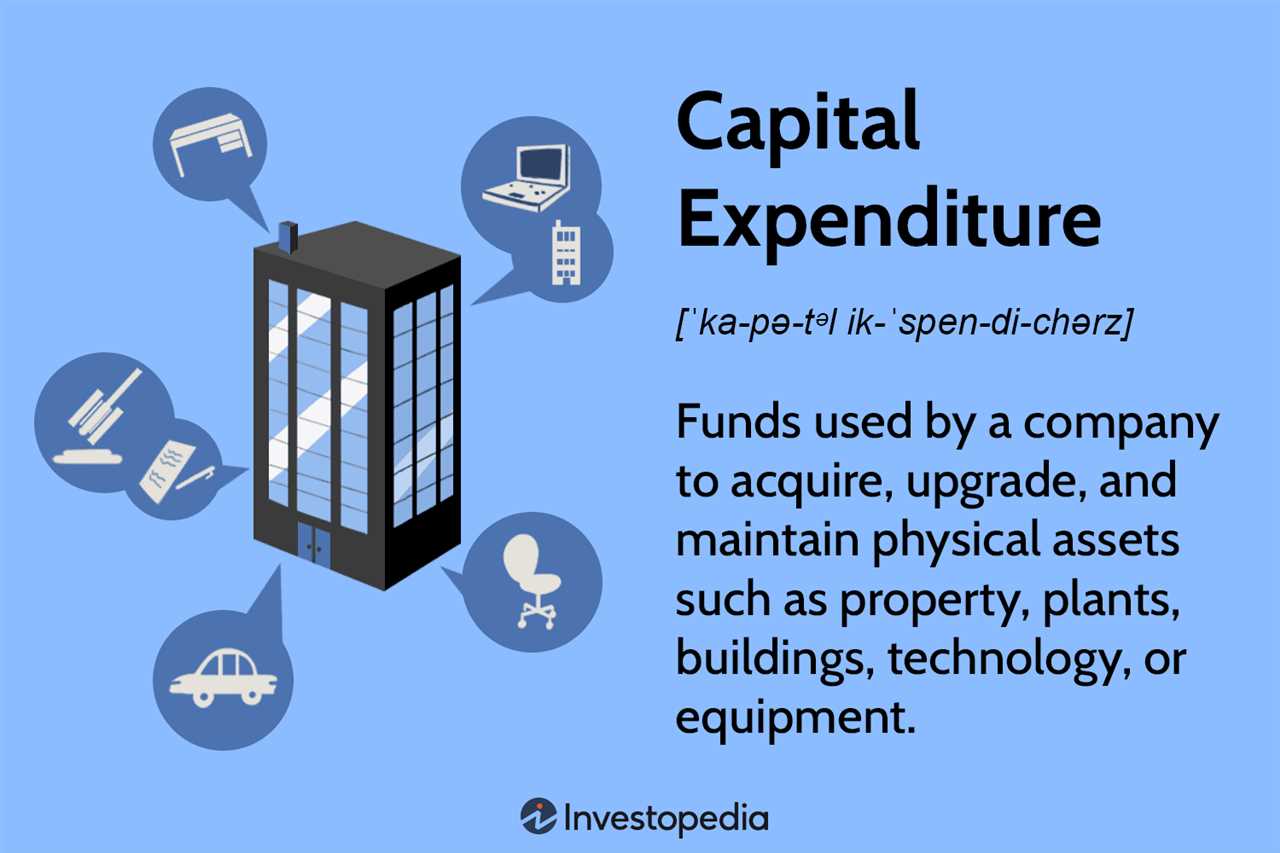What is the Expenditure Method?
The expenditure method is a key concept in economics used to measure the total value of goods and services produced within an economy. It is one of the three main methods used to calculate the Gross Domestic Product (GDP), along with the income method and the production method.
The expenditure method focuses on the total spending or consumption within an economy. It measures the aggregate demand for goods and services by adding up the expenditures made by different sectors, including households, businesses, government, and foreign entities.
The expenditure method takes into account various components of spending, including personal consumption expenditures, gross private domestic investment, government spending, and net exports. These components are added together to calculate the total value of goods and services produced in an economy during a specific period.
Overall, the expenditure method is a crucial tool for economists to analyze and understand the economic activity within a country. It provides a comprehensive view of the total spending and helps in making informed decisions regarding economic policies and strategies.
The expenditure method is a key concept in economics that is used to calculate the gross domestic product (GDP) of a country. It provides a framework for measuring the total value of goods and services produced within a country’s borders during a specific time period.
At its core, the expenditure method focuses on the total spending by different sectors of the economy, including households, businesses, government, and foreign entities. It takes into account the consumption of goods and services, investment in capital goods, government spending, and net exports.
One of the key advantages of the expenditure method is its simplicity and ease of use. It provides a straightforward way to measure economic activity and compare it across different countries and time periods. This makes it a valuable tool for policymakers and researchers.
However, it is important to note that the expenditure method has its limitations. It does not capture non-market activities, such as unpaid household work or the informal sector, which can be significant in some economies. Additionally, it does not account for changes in the quality of goods and services over time.
How Does the Expenditure Method Work?
Components of the Expenditure Method
The expenditure method breaks down the total spending into various components, including:
- Personal consumption expenditures (C): This includes the spending by individuals on goods and services, such as food, clothing, housing, and healthcare.
- Gross private domestic investment (I): This represents the spending by businesses on capital goods, such as machinery, equipment, and construction of new buildings.
- Government consumption and gross investment (G): This includes the spending by the government on goods and services, such as defense, education, and infrastructure.
By summing up these components, we can calculate the total expenditure in an economy.
Calculating GDP Using the Expenditure Method

To calculate GDP using the expenditure method, we need to add up the spending on consumption, investment, government expenditure, and net exports. The formula for calculating GDP using the expenditure method is as follows:
Where:
- C is personal consumption expenditures
- I is gross private domestic investment
- G is government consumption and gross investment
- X is exports
- M is imports
By plugging in the values for each component, we can determine the total GDP of a country.
Advantages of the Expenditure Method
The expenditure method offers several advantages in measuring GDP:
- Comprehensive: It takes into account all the major components of spending in an economy, providing a holistic view of economic activity.
- Easy to Understand: The expenditure method is relatively straightforward and easy to comprehend, making it accessible to a wide range of users.
- International Comparability: Since the expenditure method is widely used across countries, it allows for easy comparison of GDP figures between different economies.
Explaining the Process of the Expenditure Method
Government spending (G) is another component of the expenditure method. This includes spending by federal, state, and local governments on goods and services such as defense, education, healthcare, and infrastructure.
To illustrate this process, let’s consider an example. Suppose a country’s consumer spending is $1 trillion, business investment is $500 billion, government spending is $300 billion, and net exports are -$200 billion (indicating a trade deficit). Using the expenditure method formula, we can calculate the country’s GDP as follows: GDP = $1 trillion + $500 billion + $300 billion + (-$200 billion) = $1.6 trillion.
The expenditure method is widely used because it provides a comprehensive measure of economic activity within a country. By considering all components of spending, it captures the total value of goods and services produced, regardless of whether they are consumed domestically or exported.
However, it is important to note that the expenditure method has its limitations. It does not account for non-market activities, such as unpaid household work, and it may not accurately capture the value of certain intangible services, such as healthcare and education.
The Formula for the Expenditure Method
The expenditure method is a key tool used in economics to calculate the gross domestic product (GDP) of a country. It measures the total amount of spending on goods and services within an economy over a specific time period. The formula for the expenditure method is as follows:
Where:
- C represents personal consumption expenditure, which includes spending by households on goods and services such as food, clothing, and healthcare.
- I represents gross private domestic investment, which includes spending by businesses on capital goods, such as machinery and equipment, as well as changes in inventories.
- G represents government expenditure on goods and services, such as public infrastructure and defense.
- X represents exports, which are goods and services produced domestically and sold to other countries.
- M represents imports, which are goods and services produced in other countries and purchased domestically.
Calculating GDP using the expenditure method formula involves gathering data on the various components and adding them together. This data can be obtained from national accounts, surveys, and other sources. The resulting figure represents the total value of all goods and services produced within the economy.
Calculating GDP Using the Expenditure Method Formula

The expenditure method is a widely used approach to calculate the Gross Domestic Product (GDP) of a country. It measures the total value of all final goods and services produced within a country’s borders over a specific period of time. The formula for calculating GDP using the expenditure method is as follows:
Where:
C represents consumption expenditure, which includes all spending by households on goods and services.
I represents investment expenditure, which includes spending by businesses on capital goods, such as machinery and equipment, and residential construction.
G represents government expenditure, which includes spending by the government on goods and services, such as infrastructure projects and public services.
X represents exports, which are goods and services produced domestically and sold to other countries.
M represents imports, which are goods and services produced in other countries and purchased domestically.
Calculating GDP using the expenditure method formula involves collecting data on each component and adding them together. This data can be obtained from various sources, such as national accounts, surveys, and government reports. It is important to ensure that the data is accurate and representative of the entire economy.
Advantages of the Expenditure Method
The expenditure method is a widely used approach in measuring a country’s gross domestic product (GDP) and has several advantages over other methods. These advantages include:
- Comprehensive Measurement: The expenditure method takes into account all types of spending in an economy, including consumption, investment, government spending, and net exports. This provides a comprehensive measurement of the total economic activity within a country.
- Easy Data Availability: The data required for calculating GDP using the expenditure method is readily available from various sources, such as government records, financial statements, and trade data. This makes it relatively easy to collect and analyze the necessary information.
- International Comparability: The expenditure method allows for easy comparison of GDP between different countries, as it follows a standardized approach that is used globally. This enables policymakers and economists to assess and compare the economic performance of different nations.
- Reflects Economic Growth: By considering all types of spending, the expenditure method provides a more accurate reflection of economic growth. It captures changes in consumer behavior, investment patterns, government policies, and international trade, which are all essential factors in determining the overall health of an economy.
- Useful for Policy Analysis: The expenditure method is a valuable tool for policymakers and economists to analyze the impact of various policies on the economy. By examining the components of GDP, policymakers can identify areas of weakness or strength and implement appropriate measures to stimulate economic growth or control inflation.

Emily Bibb simplifies finance through bestselling books and articles, bridging complex concepts for everyday understanding. Engaging audiences via social media, she shares insights for financial success. Active in seminars and philanthropy, Bibb aims to create a more financially informed society, driven by her passion for empowering others.
